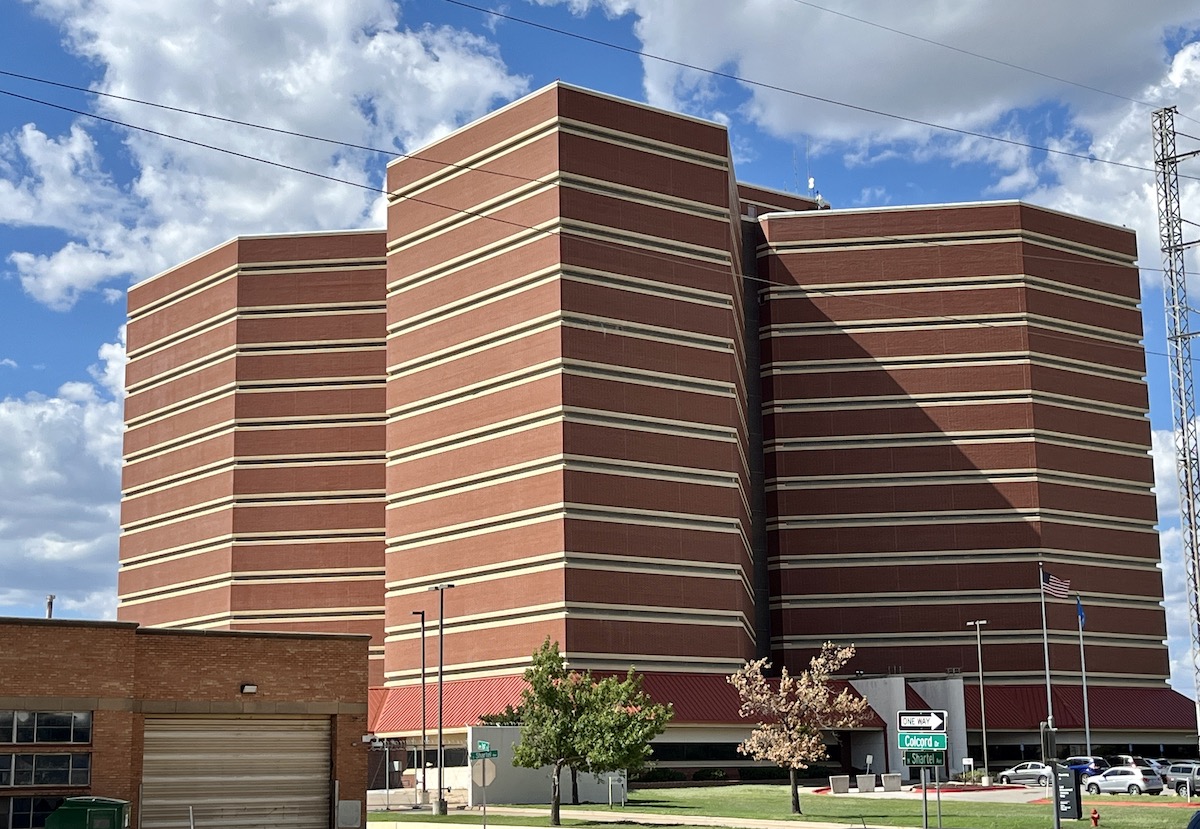
(Correction: An earlier version of this story included incorrect information about community organizations working with the diversion referral program. The program works with TEEM, Diversion Hub and the Bail Project.)
Detainees at the troubled Oklahoma County Jail could have more efficient access to existing pretrial and diversion programs through a new privately funded effort that aims to streamline that process and decrease the jail’s population.
The “diversion referral program” launched in October and is funded by the Arnall Family Foundation. Sue Ann Arnall serves as that organization’s president and as one of its board members. She is also a member of the Oklahoma County Criminal Justice Authority, otherwise known as the jail trust, which took over operational management of the jail in July 2020.
The new diversion referral program operates with three diversion liaisons, although the hiring process for a fourth is currently underway, according to director Mable Dixon-Shelton. Diversion liaisons are present at the jail five days a week working in two shifts from 6:30 a.m. to 3:30 p.m. and 3 p.m. to 12 a.m. each with an hour lunch break. The half-hour overlap gives the liaisons a chance to debrief between shifts if needed.
Diversion liaisons facilitate communication between jail administration, the courts and community groups, like Diversion Hub, TEEM and the Bail Project. Diversion Hub and TEEM work to connect people with life stabilizing resources which can include housing and job training. The Bail Project can provide funds to those who cannot post bail on their own, a significant factor for lower-income people who become unable to leave jail after arrest. Liaisons complete initial screenings for potentially eligible individuals as they are brought to the jail.
Dixon-Shelton said the diversion referral program aims to improve efficiency and to help those eligible get out of jail and be connected with services.
“When a detainee is booked in, we look up their charges and verify that they are non-violent and safe to be in the community,” Dixon-Shelton said. “If they meet the eligible criteria, we sit down and get consent from them to share their information with other parties that can include public defenders and organizations like TEEM. The goal for the program is to streamline the process of connecting detainees with existing pre-trial diversion programs.”
The new program launched Oct. 3 but early returns are positive, Dixon-Shelton said.
“So far it’s gone really well, and I think I’ve been a little surprised at the results myself,” she said. “We’re identifying people who have medical conditions or jobs that they would lose if they can’t get out of jail in a timely manner. We’ve so far had five individuals who have medical conditions that put them at risk for losing their life at the jail. One was a person who needed a heart surgery and we got her out within two days. Another had a degenerative bone disease who couldn’t function, couldn’t hold body heat, and we got him out. We’ve had several more who needed to get out to get back to work and keep their jobs.”
The program has limitations, however.
“We don’t talk about their charges or give them advice on legal matters, and we don’t promise they will get out,” Dixon-Shelton said. “We don’t take certain people, those who have bonds above $10,000 because most of the time those are people who have been arrested repeatedly and who have serious charges. We don’t make any promises on case outcomes to them.”
While it’s early, Dixon-Shelton said the need exists for efforts like the Diversion Referral Program to grow in future years.
“There are so many moving parts and so many people involved,” she said. “I mentioned our community partners, but it’s not just that, it’s lawyers and judges as well. Everyone has a role to play. But it’s an important one that can make a meaningful difference in people’s lives. I think we’ve seen that with the community partners and how they can deliver their services and make people better citizens, and I think this program will go a long way in helping make sure people get the resources they need.”
Diversion programs reduce jail population

Oklahoma County Criminal Justice Advisory Council executive director Tim Tardibono said diversion programs are one of the reasons the jail population has fallen from more than 2,000 detainees a decade ago to the 1,600 to 1,700 detainee range the facility has seen in recent years.
“That’s why we’ve had a jail population under 1,700, because these programs are continuing to pull people out of jail and get them into services,” he said. “That’s the secret sauce when it comes to keeping the jail population low and public safety high. We think the equilibrium needs to keep coming down and that these programs need to continue to grow.”
Tardibono said the diversion programs have reduced the amount of detainees at the Oklahoma County Jail who end up in a Department of Corrections prison after sentencing.
“It has a multiplier effect,” Tardibono said. “The people who are diverted, usually they are looking at prison sentences that can be between five to 15 years, and in some cases years. And it’s better to divert them at the beginning and put them back into society in a constructive way. That’s why I think diversion programs are critical.”
He said most of the diversion programs in the community started operating less than a decade ago. In 2015, there were 381 detainees from the jail who ended up in DOC custody. This year, that number is down to 148.
Outgoing district attorney undecided on program
Current Oklahoma County District Attorney David Prater is more skeptical, however. He said his office had not been notified of the program’s existence or its details even a full month after implementation. He wondered what safeguards have been put in place to ensure public safety.
“It could be a good thing, but too many times we have these people running around behind our backs trying to get people out of jail who shouldn’t be,” Prater said. “I am specifically referring to prior incidents where the District Attorney’s Office had not been included in requests for medical OR’s for violent offenders and other recognizance bond situations where the DA’s Office received no notice.”
Prater, who is in his final weeks as DA, has also been critical of jail operations. In the last two years, the facility has seen 29 detainee deaths, the latest of which occurred over the weekend.
Rene Houston, 57, had been in the jail since Aug. 29 and was facing a misdemeanor charge of property destruction and a felony charge of assault and battery on an emergency care provider. She was receiving care on the jail’s medical floor prior to being taken to an area hospital, where she died. Houston had been held on $10,500 bond.
(Editor’s note: The Arnall Family Foundation has provided financial support to the Sustainable Journalism Foundation in 2022.)




















